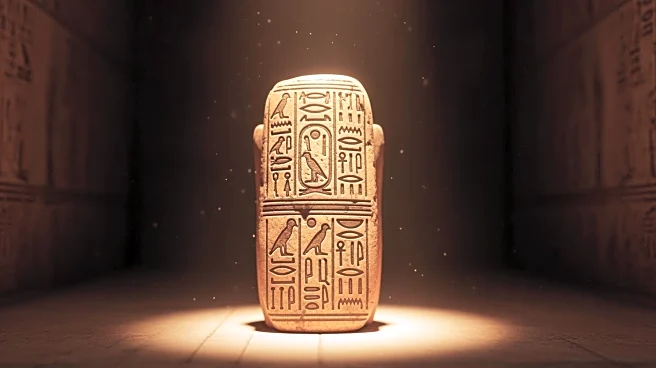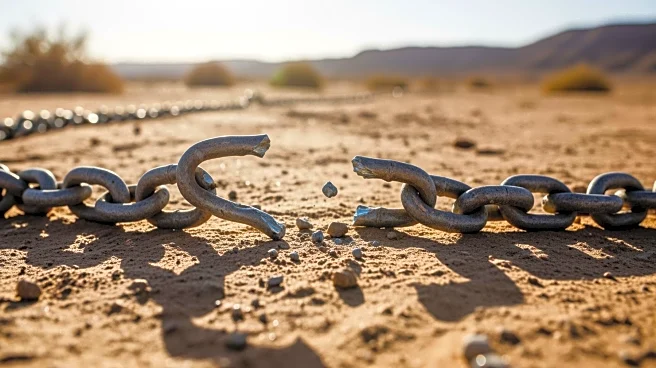What's Happening?
A recent study led by bioarchaeologist Gretchen R. Dabbs from Southern Illinois University Carbondale has cast doubt on the historical narrative of the 'plague of Akhetaten,' suggesting that the city of Akhetaten, known
today as Amarna, was not struck by a devastating epidemic as previously believed. The research involved a detailed examination of burial practices, population patterns, and archaeological evidence from four city cemeteries, which collectively hold between 11,350 to 12,950 individuals. The study found that burial practices were orderly, with bodies carefully wrapped and grave goods placed with care, contradicting the chaotic burial patterns typically associated with epidemic-hit areas. The analysis also considered historical texts, such as the Hittite 'plague prayers' and letters from the Amarna archive, but found no direct evidence of a lethal outbreak within the city itself.
Why It's Important?
This study is significant as it challenges long-held beliefs about the impact of epidemics on ancient civilizations, particularly in Egypt. By providing a more nuanced understanding of the historical and archaeological context, the research could reshape how historians and archaeologists interpret the social and economic conditions of ancient cities. The findings suggest that Akhetaten was a functioning city with a stressed but stable population, rather than one devastated by disease. This has implications for the study of ancient urban resilience and the factors that contribute to societal collapse. It also highlights the importance of using local archaeological evidence to verify historical narratives, potentially influencing future research methodologies in the field.
What's Next?
The study's publication in the American Journal of Archaeology may prompt further research into the social and economic dynamics of Akhetaten and similar ancient cities. Scholars might explore other historical narratives that have been accepted without sufficient archaeological evidence, leading to a broader reassessment of ancient history. Additionally, the findings could influence how educational materials and museum exhibits present the history of ancient Egypt, encouraging a more evidence-based approach. Researchers may also investigate the implications of work stress and undernutrition in ancient populations, contributing to a deeper understanding of historical public health.
Beyond the Headlines
The study underscores the importance of bioarchaeology and paleodemography in separating historical fact from myth. By examining burial practices and population structures, researchers can gain insights into the everyday lives and challenges faced by ancient populations. This approach not only debunks myths but also enriches our understanding of cultural practices and societal resilience. The findings also highlight the role of syndemic factors, such as work stress and poor diet, in shaping mortality rates, offering lessons for contemporary public health studies.












